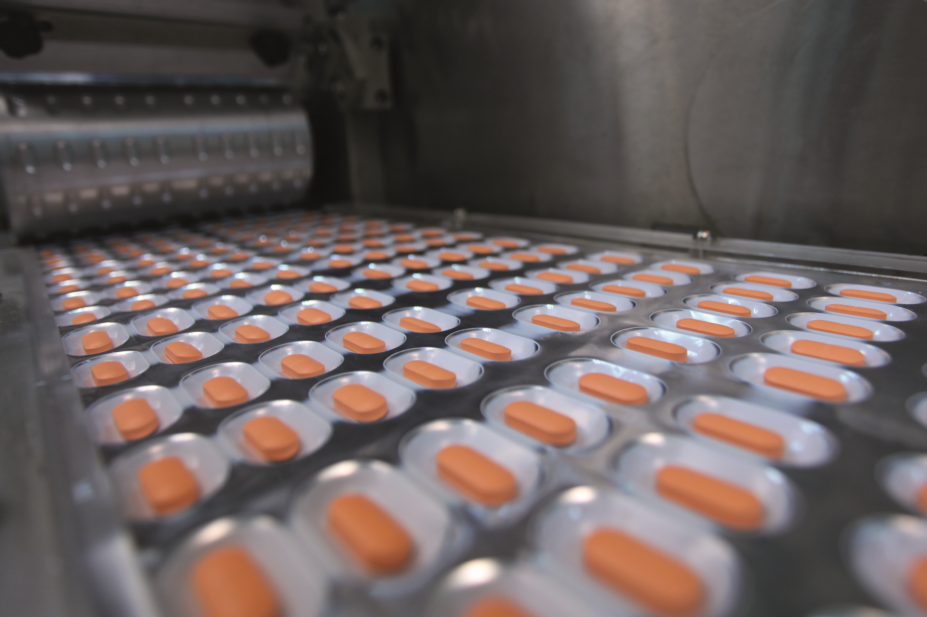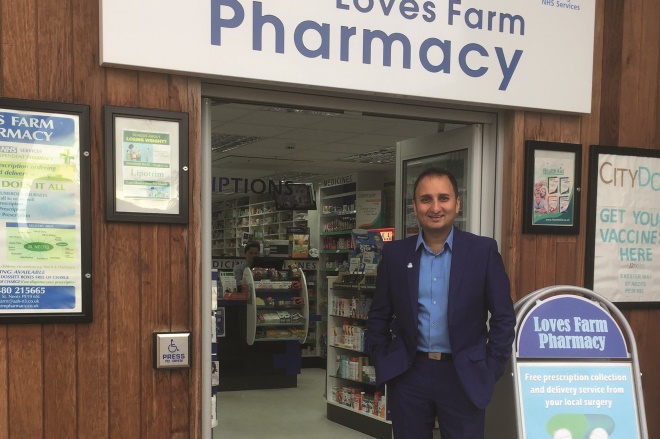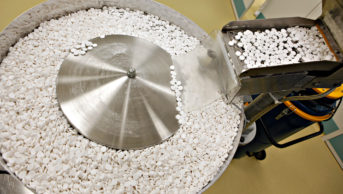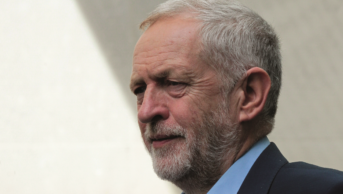
Shutterstock.com
It has been called a perfect storm. A series of problems that caused a near breakdown in the generic medicines supply chain.
A shortage of generic drugs, and subsequent price hikes, that caused life for community pharmacies to “go berserk”, according to one Pharmaceutical Services Negotiating Committee (PSNC) representative.
In August 2017, regulators took action against British generics manufacturer Bristol Laboratories, which produces up to nine billion capsules and tablets annually, after an inspection of its Luton facility.
Inspectors from the European Medicines Agency (EMA) had found problems with the integrity and recording of critical data, issues with quality control, and had concerns about an ongoing stability-monitoring programme, which regulators require in order to continuously check the product over its shelf life .
It prompted the authorities to withdraw the manufacturer’s good manufacturing practice (GMP) certificate but provisions were made for a restricted certificate to allow the continued production of any medicines deemed medically critical to the EU market.
Inspectors from the German medicines regulatory body, on behalf of the EMA, also assessed a manufacturing site of a company named Dr Reddy’s in Hyderabad, India and found that it did not comply with GMP, and so was unable to export products to Europe.
Coming on the back of the Brexit referendum that had devalued the pound, with a consequent effect on drug prices, community pharmacies who were already dealing with the effects of swingeing cuts, which reduced the annual budget for community pharmacy by £320m, found there was no give in the system. Unlike previous unforeseen generic price rises, they were struggling to find the extra cash to purchase limited supplies of routine medicines.
Price concession system
To add insult to injury, the price concession system, which was designed to handle small price fluctuations, seemed to cripple under the sheer scale and number of price hikes as concessionary price arrangements were delayed and pharmacists were left wondering if they would ever be reimbursed for medicines they had already dispensed.
Mark Burdon, regional representative for the North East and Cumbria Pharmaceutical Services Negotiating Committee (PSNC) region, says the last quarter of 2017 was “incredibly difficult” for pharmacies.

Source: Pharmaceutical Services Negotiating Committee (PSNC)
PSNC representative for the North East and Cumbria, Mark Burdon, says pharmacies suffered an “incredibly difficult” last quarter of 2017
“From October to December it just went berserk. Some pharmacies have written directly to the minister to say things are so bad they are suffering from a negative margin overall, which is not sustainable.”
He says the generics problem by itself would have been awful enough but following cuts and the recovery of margin [a reduction in category M prices to correct overpayment] from 2016–2017 it was a “triple whammy” that was almost impossible to manage.
“We have had this before but we dealt with it because there was give in the system. This time I’m hearing stories of people having to put their own money into the business.”
The price concessions system, which enables the PSNC to go to the Department of Health and Social Care (DHSC) every month with any category M medicine that has cost pharmacies more than tariff, has been at the forefront of much frustration for pharmacies and negotiators for months.
In March 2018, the final list was agreed on the 28th of the month with negotiators clearly unhappy that “once again the DHSC has imposed prices on a number of lines at lower levels than the PSNC had sought”. Negotiators also believed the pressure on community pharmacies to be “unreasonable and excessive”.
While there does seem to be agreement among manufacturers, the PSNC and the DHSC that a better system is needed — and in fact the DHSC is trialling using manufacturer prices rather than wholesaler prices in determining concessions — what that system will look like remains unclear.
The PSNC has not been privy to the data the DHSC is using in its trial and has not agreed the new approach.
Proposed new legal requirements, which will give the government powers to obtain information on medicines that it can only currently collect on a voluntary basis, could alter the data the DHSC has to work with.
The PSNC and the government have had discussions about the main principles of a new fair system agreed by the PSNC but pharmacists say they are already at their limit and need a solution urgently.
Anil Sharma, an independent pharmacist in Cambridgeshire and a representative on Cambridgeshire and Peterborough, and Suffolk, Local Pharmaceutical Committees, says his pharmacy is working with three main wholesalers and six short-line wholesalers and from overtime requests he estimates staff are spending at least half a day a week sourcing medicines.

Source: Courtesy of Anil Sharma
Anil Sharma, who sits on Cambridgeshire and Peterborough, and Suffolk, LPCs, says pharmacists have a legal duty to supply drugs
“It is just adding more and more pressure,” he says. “In March [2018], we dispensed pioglitazone and ended up with a price difference of £14–15 between the government price and the price we bought it for. Pharmacies should not be carrying this risk.
“We have a legal duty to supply, we can’t just say this drug is going to cost us £10 so we can’t give you that.”
At its peak in 2017, the price concessions list contained around 100 medicines, with pharmacies struggling to keep up with prices that were changing daily.
In January 2018, the situation eased slightly after some products, including olanzapine and quetiapine, were given a new drug tariff price under category M, but the PSNC still needed to apply for 74 concessions. In February 2018, it was 79.
It is not only the number of concessionary prices that is a major source of frustration for pharmacies but also the slow pace of agreement.
In November 2017, the PSNC asked for 97 price concessions to be awarded. By the end of the month, 38 had been agreed by the DH (now the DHSC), but a decision about the remaining 59 concessions was still outstanding.
Difficulties with current system
The PSNC has several demands for any new system used to calculate price concessions: community pharmacy contractors must not be the victims of adverse events or activity further up the supply chain; any pricing system must balance fairly a contractor’s duty to supply with a reasonable purchase risk; the PSNC must be able to provide data about price rises, but accepts that the DHSC will want to verify this; any data used to set prices must relate to the period for which a concession is given; and the PSNC must be able to challenge proposed price concessions.
Burdon says the current concession system was simply not designed to handle this number of medicines.
“It is a very complex system and even people intricately involved don’t fully appreciate just how complex it is,” he says.
“Ordinarily, 1% of volume is dealt with under the concession system and we’re now running at nearer 10% in volume.”
The price concessions list contains a whole host of routine medicines that pharmacies dispense frequently.
“The pharmacist is buying a product blind to what they will be paid for it. We accept as businesses there is an element of risk at the moment [but] feel this risk is unfair,” adds Burdon.
He says that while prices seem to be levelling out there is a danger that pharmacists become desensitised to the constant changes and come to see fluctuations in price as something that just needs to be accommodated.
“We do need to be braced for it to happen again, we cannot afford to be complacent. We have to make sure we have a system that is able to cope with large volumes of volatile product,” he says.
Mike Hewitson, until recently a member of the National Pharmacy Association board and an independent pharmacy contractor in Dorset, describes the situation since September 2017 as “absolute hell”.

Source: Courtesy of National Pharmacy Association
NPA board member, Mike Hewitson, says the current concessionary price system is not sustainable
“Pharmacists have been taking a leap in the dark every month. It has gone beyond a joke now, costing contractors thousands every month. We can’t sustain this anymore.”
Huge costs to NHS
According to a breakdown of price concession data from the EBM Datalab at the University of Oxford, for Dorset Clinical Commissioning Group in April 2017, price concessions totalled £35,726. By October 2017, this had reached a peak of £710,161. The latest data show an estimate for February 2018 of £114,079, a signal that the scale of the problem, while still an issue, has settled down considerably.
Hewitson adds: “It might only be 10–20p per item but times that by 200 patients a month and it adds up.”
He believes that the price volatility that has been seen in recent months is not just about a one-off manufacturing problem but the inevitable impact of having a globalised supply chain.
“After Brexit, the price of the pound fell by 20% and the government and the NHS are being a bit naïve that they are immune to these impacts. We are seeing the laws of supply and demand in action.”
For large companies with pharmacy and wholesale interests this is just about moving money around the business but for independents it is about future viability, he insists.
“We need urgent clarity from the government on price concessions,” he says.
“It was probably typical for there to be 30–40 [medicines] on concession. In the past quarter it was 70, 80, 90 and it is getting to the point where they may as well republish the drug tariff.”
Some analysts believe that generic drug prices have been pushed too far and what has been seen over the past six months is a degree of market correction.
Add in to that post-Brexit uncertainty over the regulation and distribution of medicines and we are, says Hewitson, “nowhere near working out what any of this means”.
The partial suspension of Bristol Laboratories’ manufacturing licence has been extended until 22 November 2018 by the Medicines and Healthcare products Regulatory Agency.
Other manufacturers have stepped in to fill demand but the ongoing suspension of a large supplier to the UK generics market will undoubtedly continue to put pressure on pharmacies.
Warwick Smith, director general of the British Generic Manufacturers Association (BGMA), says other manufacturers filled the gap created by the regulatory issues but with a higher cost of raw materials and the production set up costs, prices inevitably went up.

Source: British Generic Manufacturers Association (BGMA)
BGMA director general, Warwick Smith, accepts there is no perfectly fair system for reimbursing pharmacies for generic drugs
However, this is set against a backdrop of historically low generic prices that had seen manufacturers withdrawing from the market because profit margins had become too low or non-existent, says Smith.
“We have seen market prices coming down following the concessions so the market does recalibrate itself and they are getting back to normal. However, I doubt we will see the very low prices we saw at the start of 2017,” he says.
Smith believes it was a sensible and pragmatic decision to allow Bristol Laboratories to keep producing some medicines in cases where the DHSC felt the gap could not be filled.
“The one thing I would say is, given the scale of the disruption, the industry supply chain and pharmacies have done a pretty good job of making sure patients don’t go without medicines.”
In terms of ensuring a fair system of reimbursement for pharmacies, he admits there is no perfect answer.
The PSNC is also clear that there is a danger that if you alter the system drastically it could have unintended consequences on the market.
“Our role is to provide data to allow the department to make decisions,” says Smith, who says that over the past six months the DHSC has tried “three or four ways” of recording data.
“A positive for the UK is that there is flexibility in the supply chain. What is not so good for the UK is there is a single purchaser. We have the lowest generic prices in Europe but that means if there is a shortage, companies will send what they have to the highest priced markets first.”
But essentially there is a floor beneath which prices cannot go while maintaining a robust supply chain and he says we have probably reached that point.
Andrew Rut, chief executive at MyMeds&Me, a company that provides data capture tools for pharmacovigilance, agrees that generics prices have been driven too low, pushing manufacturing to China and India, which then raises issues over standards and creates tension with regulators.

Source: MyMeds&Me
MyMeds&Me chief executive, Andrew Rut, says ensuring a supply of high quality generic drugs is inevitably expensive
What we have seen, he says, is an inevitable correction.
“If a manufacturer fails and others are left to pick up the pieces, prices will rise,” he says.
“Let’s take the example of phenytoin for epilepsy. A generic product with a narrow therapeutic window where there is a high consequence of someone having too much or too little.
“You’re going to have to manufacture that to a high quality and the price will reflect that.”
If the NHS wants really cheap medicines then inevitably corners will be cut, other manufacturers will want out of the market and nobody wins, says Rut.
“You want to maintain the integrity of the manufacturing process and the supply chain and you want quality and that takes time and money.”
Figures from the EBM Datalab show that the total cost of price concessions for 2017–2018 so far is £308.7m. In terms of the NHS bill, the final impact will be much greater given that formerly low-cost generics have been moved back into the drug tariff at a higher price. Category M prices that cover around 500 medicines are set quarterly and have built in adjustment mechanisms to account for any under or overpayment.
Underpinning all these figures is the sheer professionalism and dedication to patient care that pharmacy staff have shown through their efforts to hunt down stock and supply medicines at a loss.
The DHSC agrees that regulatory action and a decrease in the value of sterling are two main factors behind the generics price rises seen since the summer of 2017.
But it maintains that there are mechanisms in place to prevent pharmacy contractors dispensing at a loss and to ensure contractors overall get paid enough, including the medicine margin survey.
“The DHSC has been working with the PSNC and the BGMA to ensure reimbursement prices, including concessionary prices, reflect the market as closely as possible,” a spokesperson says.
In March 2018, the Pharmaceutical Group of the European Union, along with associations representing manufacturers and wholesalers, issued recommendations asking for greater transparency and availability of medicine shortages data, early detection and assessment of potential shortages, consistency of reporting, increased access to information across all parts of the supply chain, improved data infrastructure and collaborative governance processes.
For Tim Farron, Liberal Democrat MP for Westmorland and Lonsdale, who has tabled an early day motion calling on the government to create an Essential Community Pharmacy Scheme, more needs to be done to ensure the viability of rural independent pharmacy for whom these cashflow problems are having a disproportionate impact.

Source: Shutterstock.com
Former Liberal Democrat leader, Tim Farron, has tabled a House of Commons early day motion calling on the government to create a system that would fund the purchase of prescription drugs “upfront”
He wants the scheme to “fund the purchase of prescription drugs upfront, rather than leaving local pharmacies out of pocket until the end of the month”.
Pharmacies in his constituency raised the issue with him after losing thousands of pounds a month.
“We have seen pharmacies £7,000–8,000 in the red on one drug for one month. We think that is a real threat,” says Farron.
“We have not seen a closure yet but what we hear anecdotally is that this is the final straw.”
Simon Butterworth, who runs a small independent pharmacy in Hawkshead, Cumbria, is one of Farron’s constituents. He is buying medicines for which he is not being fully reimbursed and the sums do not add up anymore.
He says the DHSC is looking at pharmacy as one whole system but in actuality it ranges from small independents to integrated wholesalers and it is leaving businesses like his, which provide vital services for patients for miles around, very vulnerable.
“We need to go back to the drawing board and redesign the system because it is not working,” he concludes.


